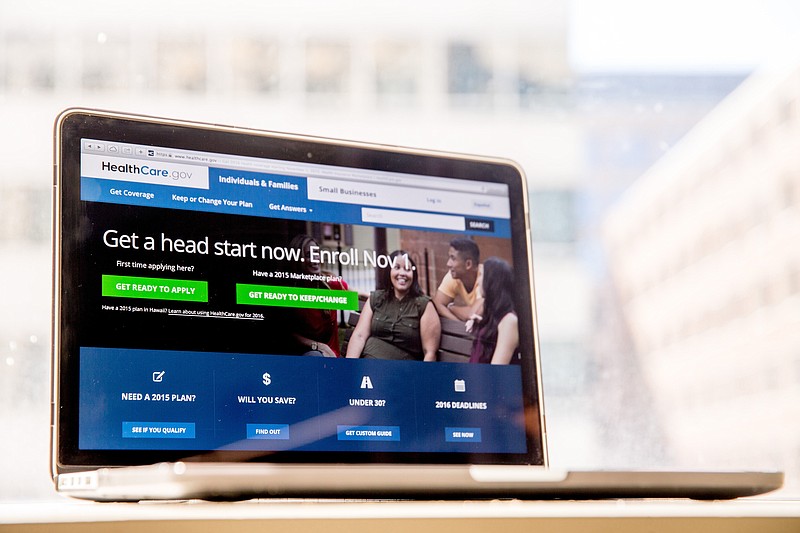"Obamacare Premiums for 2017 Jumped 25% on Healthcare.gov."
That was the headline on the Reuters news story Tuesday. It described the nationwide average rise for benchmark Obamacare, less well known as the most popular Affordable Care Act or ACA insurance plans - plans for working people whose employers do not offer insurance.
The story points out that this is the biggest nationwide yearly increase in ACA rates since the "market place" insurance plans first went on sale in 2013 for the following year. The average monthly premium for the most popular plans - the "Silver" plans - rose to $302 from the 2016 price of $242.
But that's not what 85 percent of workers enrolled have paid or will pay because government provides income-based subsidies to pay part of these enrollees' policy costs - much as private employers who offer insurance pay part of each worker's premiums.
Few stories and news stories bother to note that the subsidies ACA enrollees are credited with also will rise with those increasing premium costs. This contributes to the public view that Obamacare is failing. But it's not so much failing as it is being starved - both of full participation and of public understanding.
The Department of Health and Human Services notes that even in 2017 after those premiums go up, 72 percent of the 12 million consumers on HealthCare.gov will find plans comparable to private plans with a premium of less than $75 a month.
The agency attributed the 2017 premium increases to insurers adjusting their rates to reflect the increased cost of health care. That's the same reason cited for increases in private insurance plans. Rising health care costs reflected - in part - by headlines like this: "Erlanger earns $2.5 million in first quarter " (The budgeted net income was $688,000.)
And just to bring home how Obamacare works for real people in Chattanooga, here's an example based on preview inputs into HealthCare.gov with a Chattanooga Zip code.
A single 40-year-old man (or woman) here who expects to make $15 an hour for a full-time (but uninsured) job in 2017 can expect to buy a Silver BlueCross plan with a $2,000 deductible for about $129 a month, according to HealthCare.gov. The real cost of that policy would be $506.22, but a $377 government tax credit - the subsidy - will replace the portion of that policy that an employer would normally provide as a work benefit.
If that same customer wants a similar plan with a $0 deductible, the cost will be $223.18 a month. The customer could also buy a Bronze plan with a $5,200 deductible for $44.89 a month.
Since the ACA went into effect, Tennessee's uninsured rate dropped almost 5 percent.
To be still more locally clear, that nationwide 25 percent increase in ACA plans sounds pretty mild in Tennessee where BlueCross - a nonprofit insurer - has announced two back-to-back yearly increases of more than 60 percent.
The increases vary from state to state, in part depending on whether those states are Republican or Democrat leaning. States headed by GOP leaders didn't opt in to the ACA for partisan reasons: It was Obamacare, after all.
But that meant fewer people in those states - the ones generally healthy and young enough to work the most steady and well-paying jobs - would not be able to get insurance because they made too much money to be eligible for Medicaid and not enough money to pay even the smallest premiums of ACA.
Initially, about 22 states declined to opt in to the ACA by expanding their Medicaid programs. Now that number has dropped to 19. Tennessee's Gov. Bill Haslam made two late attempts to join the program and bring $22.5 billion into Tennessee, but our lawmakers - nearly all Republican - passed a law saying they would have to approve first. Even though Haslam negotiated a Tennessee-specific waiver to join, Chattanooga Sen. Todd Gardenhire cast votes that killed the measure in committee - curtailing floor votes.
What should have become by now about 21 million Americans in ACA plans, became 12 million of the sickest working Americans. Those enrollees in turn helped drive the increase in health care costs.
Now what comes next depends, in large part, on the results of the Nov. 8 election. The GOP nominee says he'll dismantle the program - a genie that will be hard to put back in the bottle since it would mean undoing two very popular portions of the law: Single children may remain on their parent's family policies until they are 26, and insurers can no longer drop or refuse to cover anyone because of pre-existing conditions.
Democratic nominee Hillary Clinton says she'll work to fix what's broken.
Given the immense sabotage from the Republicans, that may be pretty hard.
And the real fix would be even harder: to eliminate the middle men - insurers.
That won't - and probably shouldn't - happen any time soon. The health insurance industry, even in 2013, was a $900 billion industry employing almost a half million people in some 1,300 private health insurance companies - all trying to maximize their shareholder income and profit.
Clearly, however, something has to give.
Obamacare isn't the problem - it's the symptom.
What's failing is our health care system.
